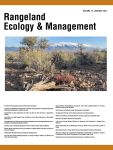Ver ítem
- xmlui.general.dspace_homeCentros Regionales y EEAsCentro Regional Patagonia SurEEA Santa CruzArtículos científicosxmlui.ArtifactBrowser.ItemViewer.trail
- Inicio
- Centros Regionales y EEAs
- Centro Regional Patagonia Sur
- EEA Santa Cruz
- Artículos científicos
- Ver ítem
Effect of defoliation frequency on Rytidosperma virescens plants and arbuscular mycorrhizal fungi colonization
Resumen
Rangelands provide different ecosystem services to satisfy human needs. Although grazing management in southern Patagonia is mostly characterized by extensive continuous grazing, rotational grazing management may improve plant productivity and its associated microbiome. Arbuscular mycorrhizal (AM) symbioses play an important role in the functioning of arid rangelands. However, in most arid and semiarid grasslands, little is known about the
[ver mas...]
Rangelands provide different ecosystem services to satisfy human needs. Although grazing management in southern Patagonia is mostly characterized by extensive continuous grazing, rotational grazing management may improve plant productivity and its associated microbiome. Arbuscular mycorrhizal (AM) symbioses play an important role in the functioning of arid rangelands. However, in most arid and semiarid grasslands, little is known about the environment-plant-symbiont interaction under different defoliation frequencies and contrasting growth conditions. In this context, the objective of the present study was to evaluate the response of Rytidosperma virescens native grass and the associated AM fungi under different defoliation frequency treatments (plants undefoliated, two clippings with 50-d intervals between defoliations, four clippings with 30-d intervals, and six clippings with 21-d intervals) and two growth conditions (field and greenhouse) in a 150-d experiment. Defoliation frequency with 21-d clipping intervals negatively affected plants and AM colonization. We found a negative linear relationship between AM colonization and removal of aboveground biomass and a positive relationship with root biomass and leaf area of R. virescens plants. We determined that the appropriate recovery period for rotational grazing systems should be at least 50 d (threshold) to optimize forage production and AM symbiosis during spring-summer seasons. Sustainable grazing management practices should be designed to improve or
restore AM communities to maintain positive feedback with plant development.
[Cerrar]

Autor
Toledo, Santiago;
Fontenla, Sonia Beatriz;
Peri, Pablo Luis;
Fuente
Rangeland Ecology & Management 84: 1-9. (September 2022)
Fecha
2022-06-09
Editorial
Elsevier
ISSN
1550-7424
Formato
pdf
Tipo de documento
artículo
Palabras Claves
Derechos de acceso
Restringido
 Excepto donde se diga explicitamente, este item se publica bajo la siguiente descripción: Creative Commons Attribution-NonCommercial-ShareAlike 2.5 Unported (CC BY-NC-SA 2.5)
Excepto donde se diga explicitamente, este item se publica bajo la siguiente descripción: Creative Commons Attribution-NonCommercial-ShareAlike 2.5 Unported (CC BY-NC-SA 2.5)

